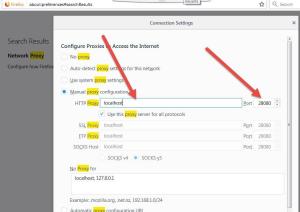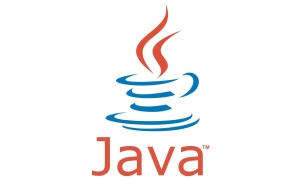Introduction
All this started from a change (and a mistake) done by one of my co-workers that did a small change in the code with rather dramatic consequences;
So, imagine we have a (java) class T having a private field f of type String:
public class T {
private Boolean f;
public void setF(final Boolean f) {
this.f = f;
}
public Boolean getF() {
return f;
}
....
}
Now, imagine (again) that the type of f field will change from String to something else, let’s say Boolean; the compiler will help you to find the places where the setF method is called with the wrong parameter and also where the getF method do not comply with the new signature.
But there is at least one case where the compiler cannot help you; it is the case of the call of java.lang.Object.equals method. So something like “aString”.equals(t.getF()) in the case when the f field is a boolean will always return false because we try to check the equality for incompatible types.
The goal of this ticket is to find solutions to catch this kind of problem at runtime or (ideally) at compile time. Anyway, if you want to catch this kind of problem in your code and you do not want to reinvent the wheel (as I will do in this ticket), just use the FindBugs. FindBugs is capable to catch this kind of error (EC_UNRELATED_TYPES) and many, many more (see FindBugs Bug Descriptions).
How to find the buggy calls at runtime
The only way that I see to catch the buggy equals calls in a generic way is to use AOP. The basic idea is to write an aspect that will intercept all the calls to the equals methods and check that the caller and the callee are of the same type.
For the implementation I choose to use AspectJ framework (for a very good introduction to AspectJ I strongly recommend the AspectJ in action book) and the code it looks like this:
import org.aspectj.lang.annotation.Aspect;
import org.aspectj.lang.annotation.Before;
import org.aspectj.lang.annotation.Pointcut;
import org.github.adriancitu.equals.WrongUseOfEqualsException;
@Aspect
public class EqualsCheckerAspect {
@Pointcut(
"execution(public boolean Object+.equals(Object)) "
+ "&& target(target) "
+ "&& args(methodArgument)"
+ "&& !within(EqualsCheckerAspect)")
public void executeEqualsPointcut(
final Object target,
final Object methodArgument) {
}
@Before("executeEqualsPointcut(target,methodArgument)")
public void executeEqualsAdvice(
final Object target,
final Object methodArgument) throws Exception {
if (target != null && !target.getClass().equals(methodArgument.getClass())) {
throw new WrongUseOfEqualsException("Tried to call the equals methods on different classes types");
}
}
}
I will try briefly to explain what the previous code is doing; this is not a tutorial about AspectJ or AOP so, some of the definitions will be a little bit approximative, so AOP purists please forgive me.
The aspect (which is a Java class annotated with the @Aspect annotation) contains 2 parts; the pointcut (the method annotated with the @Pointcut annotation) and the advice (the method annotated with the @Before annotation).
The pointcut represents the parts of program flow that we want to intercept; in our case we want to intercept all the calls to the method having the following signature boolean equals(Object) on any instance of java.lang.Object class and on any subclasses (that’s the meaning of the + from the ..boolean Object+.equals). The target and args are just AspectJ structures that helps to capture the caller and the callee of the equals method.
The advice represents the code that will be executed when a poincut is intercepted. In our case we would like to do the verification that the caller and the callee are of the same type before the execution of the equals method (this is the meaning of the @Before annotation). The advice code represented by the executeEqualsAdvice method is quite simple, it just retrieve the caller and the callee objects (already captured by the target and args) and check that are instances of the same class.
This solution will fix the problem but it have some drawbacks:
- the check is done at runtime
- you have a dependency on AspectJ
How to find the buggy calls at compile time
It would be really nice to be able to catch this problem directly at compile time and eventually (not mandatory) having no other technical dependency.
Our salvation is coming from the javac plug-in mechanism which is new in Java8. The javac plug-in mechanism allows to a user to specify one or more plug-ins on the javac command line, to be started soon after the compilation has begun. There is no official tutorial about how to craft and use a javac plug-in, the only information that I’ve found is this Javadoc link and this blog ticket.
The javac plug-in mechanism gives access to the abstract syntax tree of the compiled program by implementing the visitor pattern so we will use this mechanism to catch and check the executions of the equals methods. The entire code of the plug-in can be found on this GitHub repository.
The steps of crafting a (javac) plug-in are the following ones:
- The entry point of the plug-in should implement the com.sun.source.util.Plugin interface. The code of the class can be found here : RuntimeEqualsCheckPlugin.java
- Create a class that implements the com.sun.source.util.TaskListener interface in order to perform additional behavior after the type-checking phase. The code of the class can be found here: EqualsMethodCallTaskListener.java
- Create an abstract syntax tree visitor by extending the com.sun.source.util.TreePathScanner<R,P>
end extend the behavior for the method invocation. The code for this class can be found here: CodePatternTreeVisitor2.java
The most important part of CodePatternTreeVisitor2.java class is the overridden visitMethodInvocation method. I will show you the code but the most important lesson that I learned is that in the code you have to work with trees, everything is a subtype of the Tree interface.
public Void visitMethodInvocation(MethodInvocationTree methodInvocationTree, Void aVoid) {
final List<? extends ExpressionTree> arguments = methodInvocationTree.getArguments();
final ExpressionTree methodSelect = methodInvocationTree.getMethodSelect();
switch (methodInvocationTree.getKind()) {
case METHOD_INVOCATION:
Tree.Kind methodSelectKind = methodSelect.getKind();
switch (methodSelect.getKind()) {
case MEMBER_SELECT:
//t1.equals
//or
//field.equals
MemberSelectTree memberSelectTree = (MemberSelectTree) methodSelect;
//it's a equals method invocation
if (isEqualsCall(
new TreePath(getCurrentPath(), methodSelect),
methodInvocationTree.getArguments() != null ?
methodInvocationTree.getArguments().size() : 0)) {
//t1
//or
//field
ExpressionTree expression = memberSelectTree.getExpression();
TypeMirror callerType =
trees.getTypeMirror(
new TreePath(getCurrentPath(), expression));
Optional argumentType =
omputeArgumentType(methodInvocationTree.getArguments());
if (argumentType.isPresent()
&& !callerType.equals(argumentType.get())) {
System.err.println("Try to call equals on different parameters at line "
+ getLineNumber(methodInvocationTree)
+ " of file " +
currCompUnit.getSourceFile().getName()
+ "; this is a bug!"
);
}
}
}
}
return super.visitMethodInvocation(methodInvocationTree, aVoid);
}
The steps to execute the (javac) plug-in are the following ones:
- Set up a file called com.sun.source.util.Plugin located in META-INF/services/ of your plug-in code because the plug-ins is located via java.util.ServiceLoader. The content of the file should contain the name of the plug-in (com.github.adriancitu.equals.com.github.adriancitu.equals.runtime.RuntimeEqualsCheckPlugin in this case).
- Create a jar with all the plug-in files and the com.sun.source.util.Plugin file.
- Execute your plug-in against the javac using the -processorpath flag to indicates the path where the plug-in JAR file is located and -Xplugin flag to indicate the name of the plug-in to run. In our case the command will be something like :
javac -processorpath plugIn.jar
-Xplugin:RuntimeEqualsCheckPlugin ./NoDependenciesTest.java
So finally was possible to have a compile time solution, the only drawback that I see for the plug-in solution is that the API is not very user friendly.






You must be logged in to post a comment.